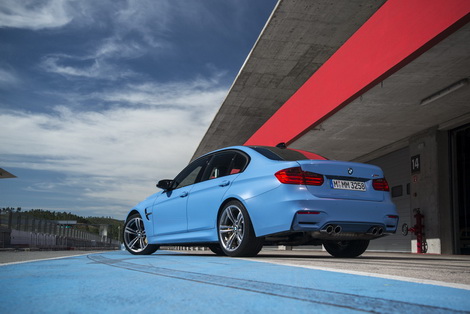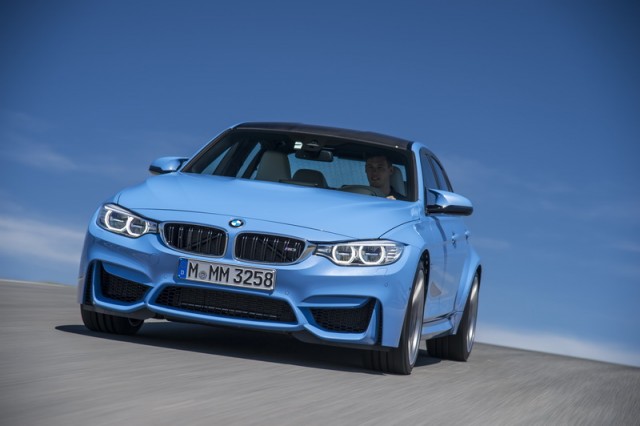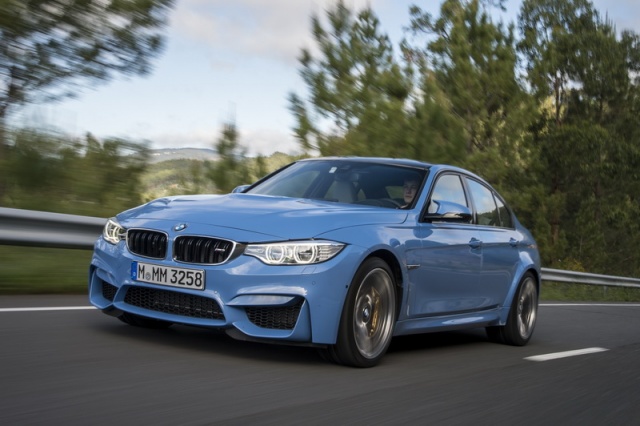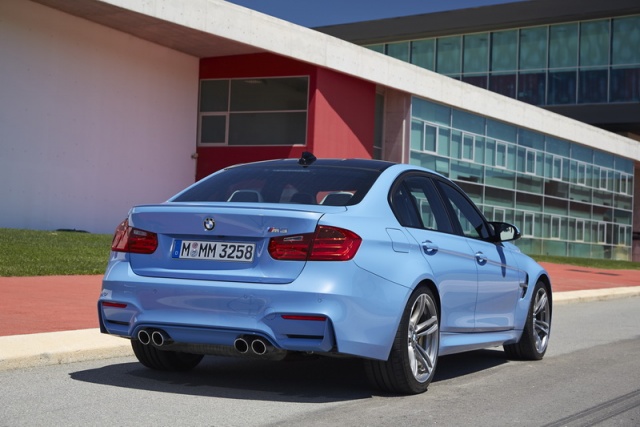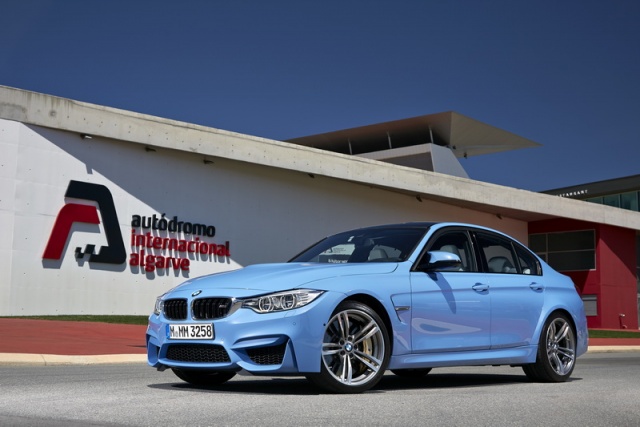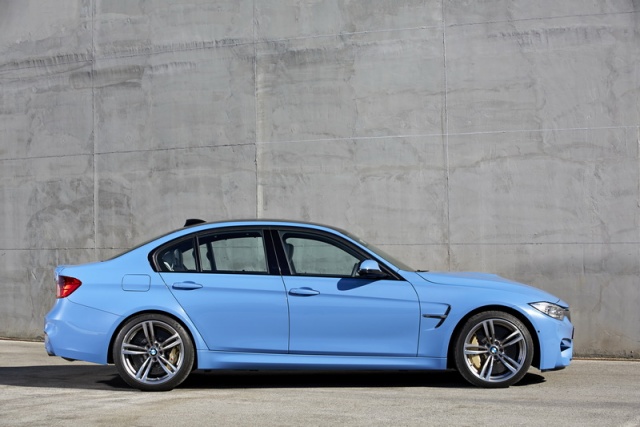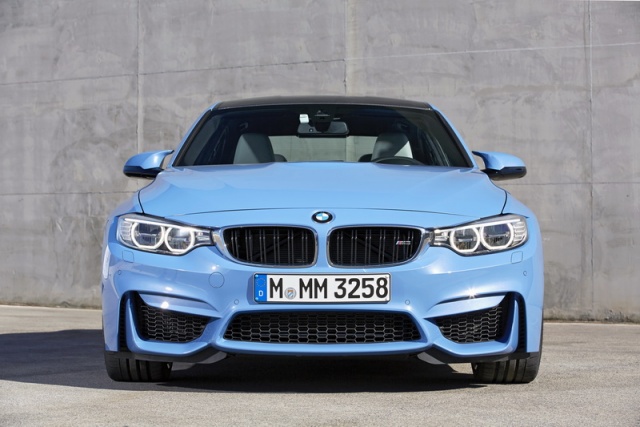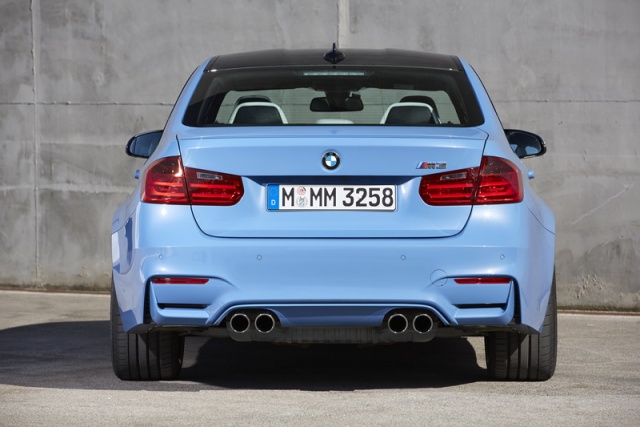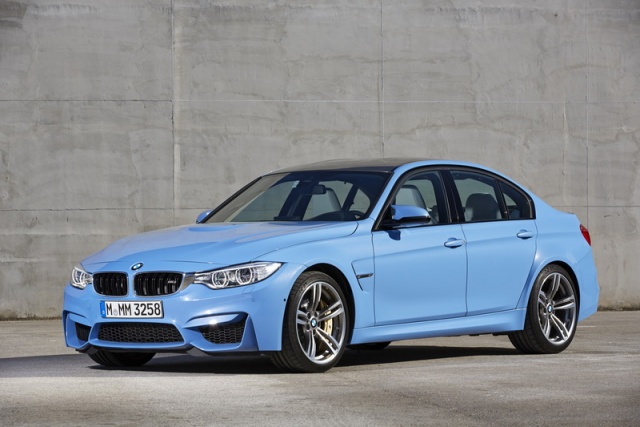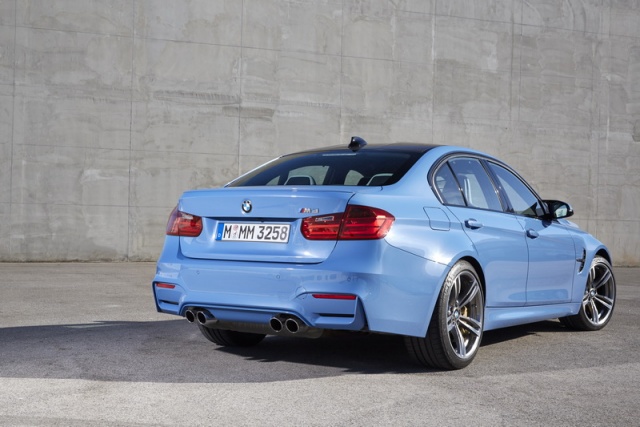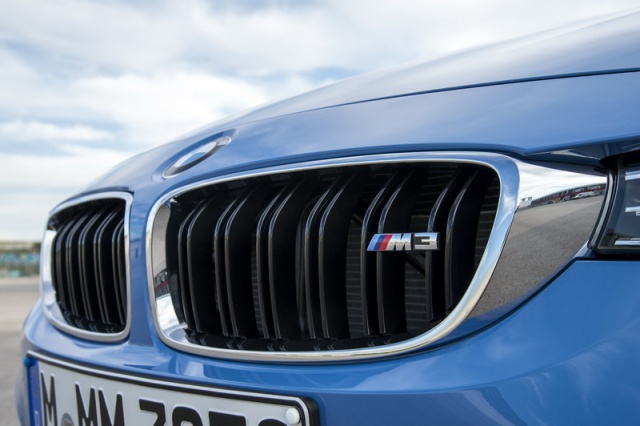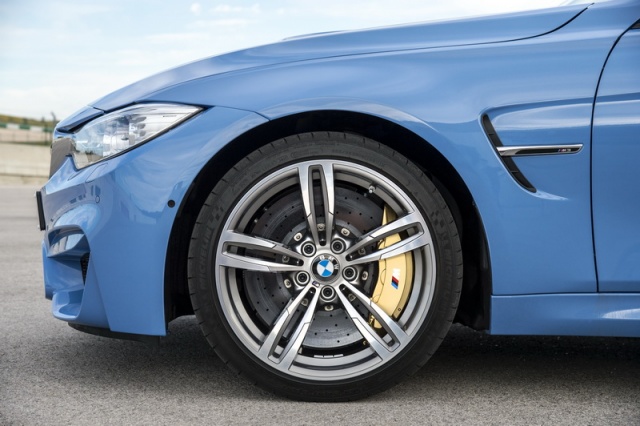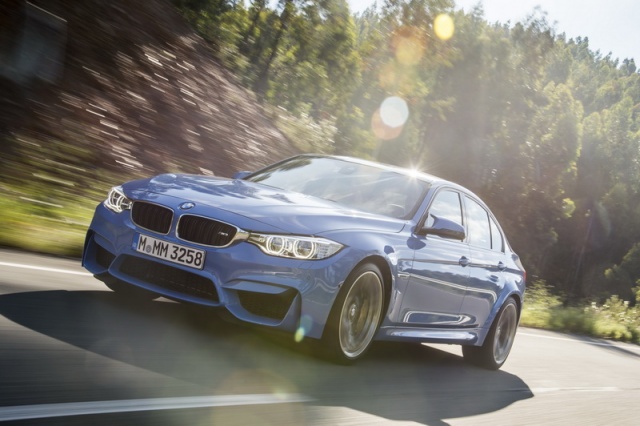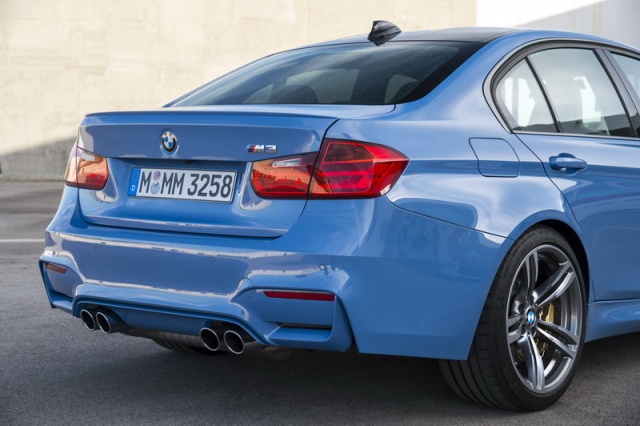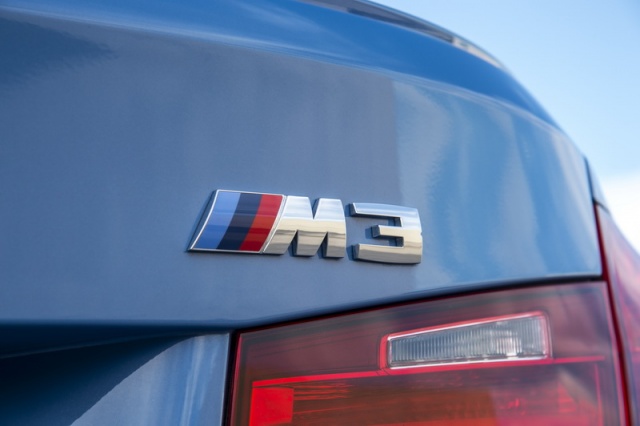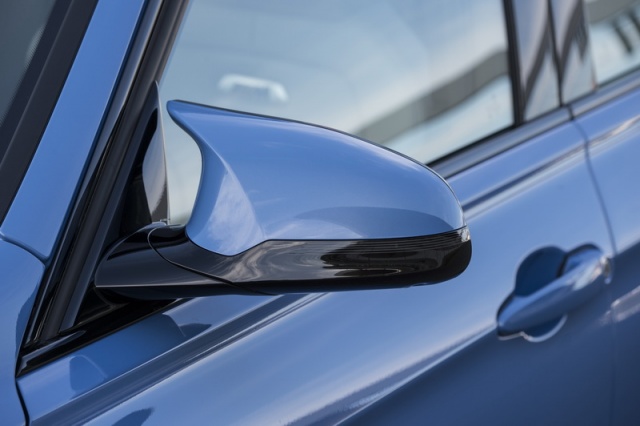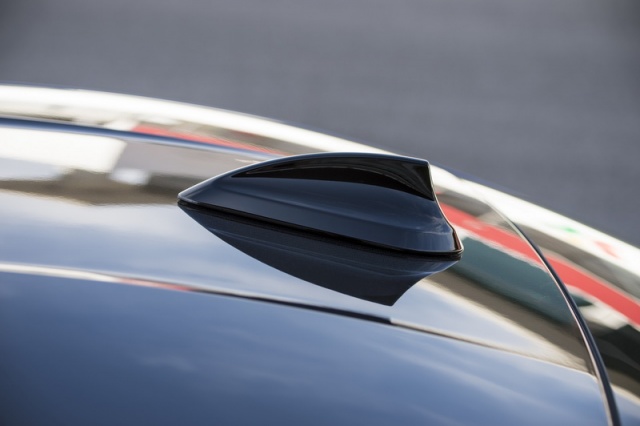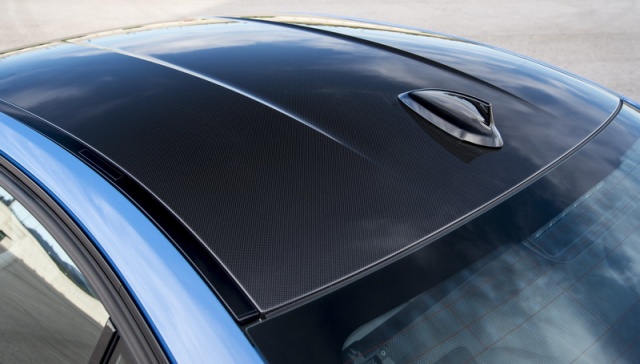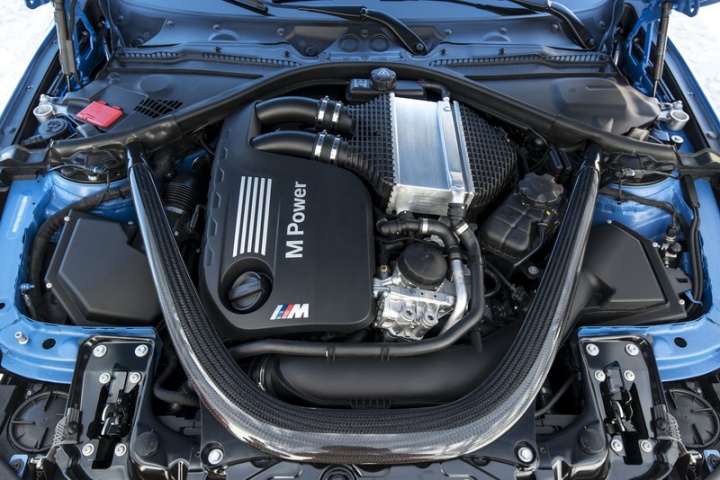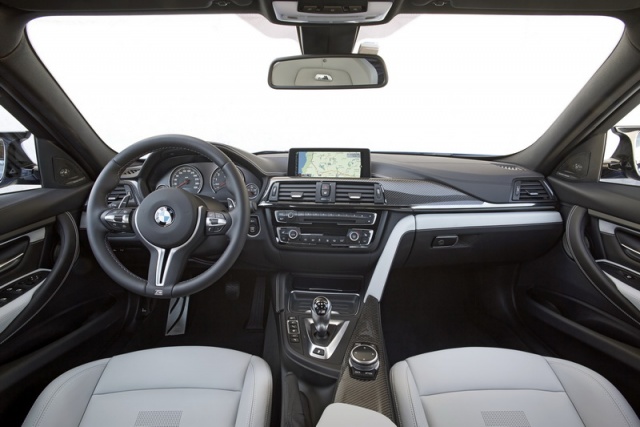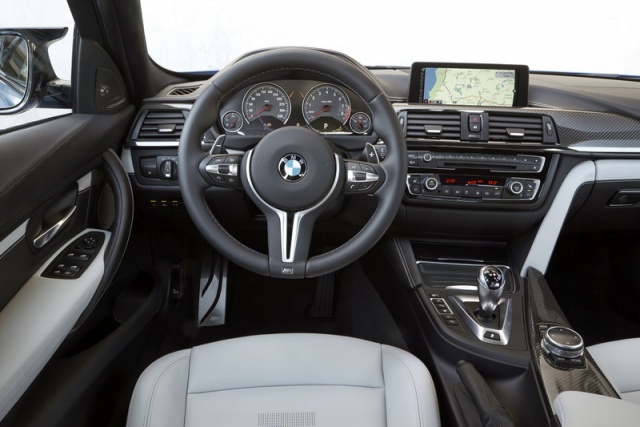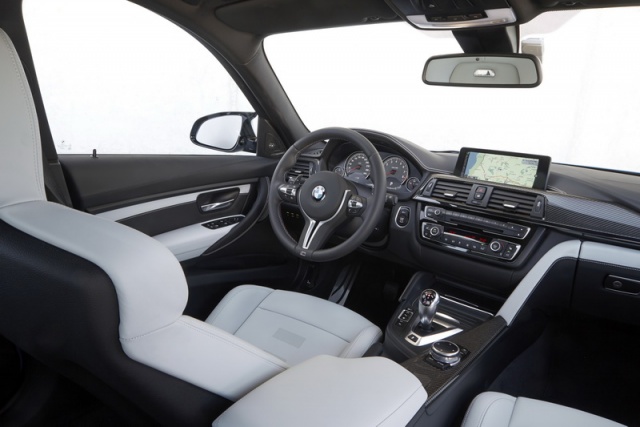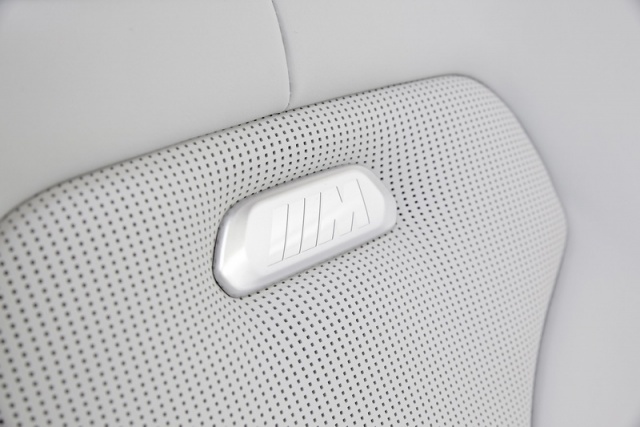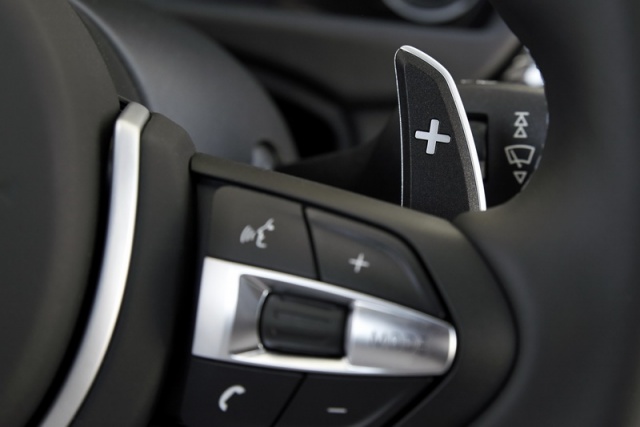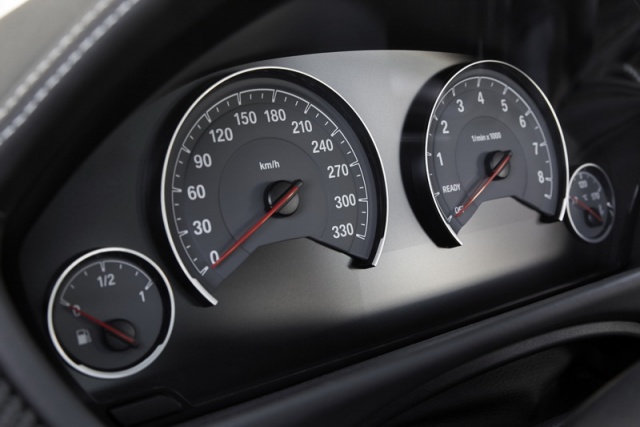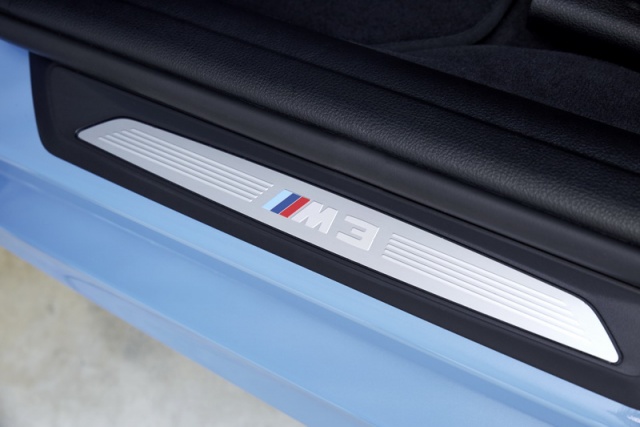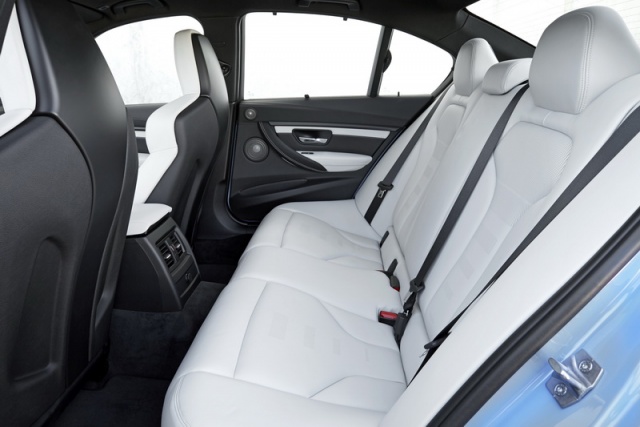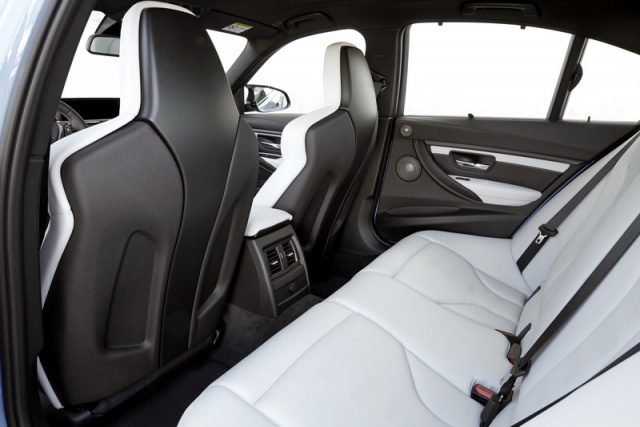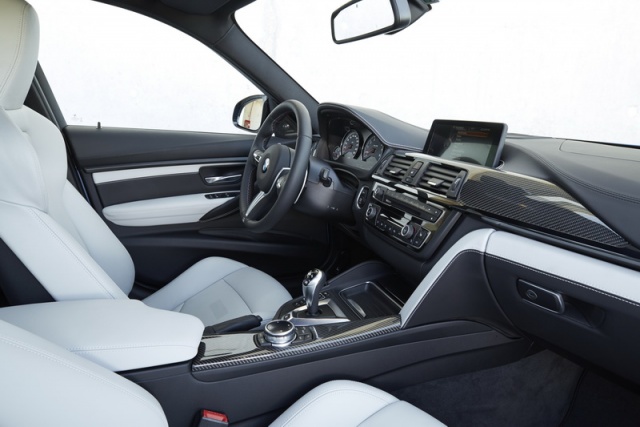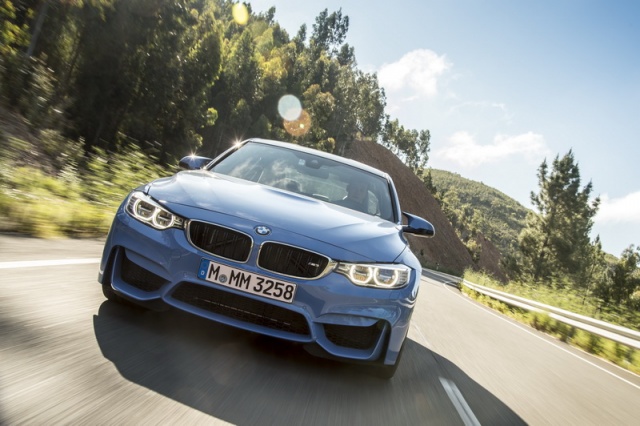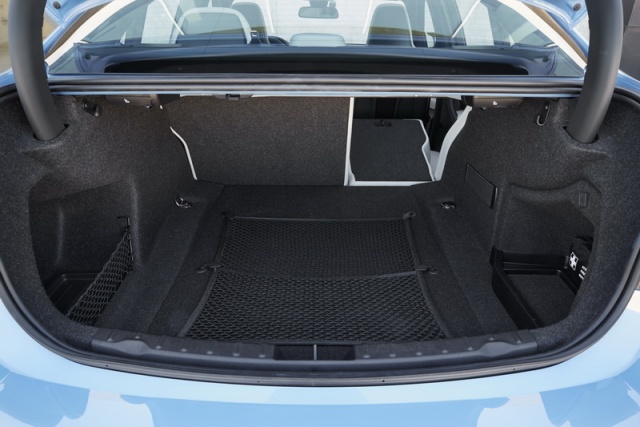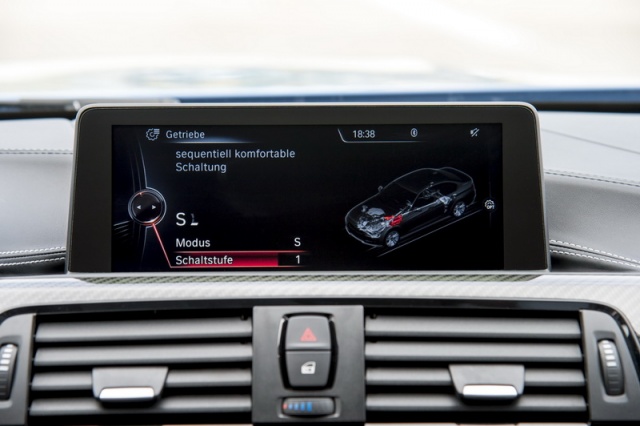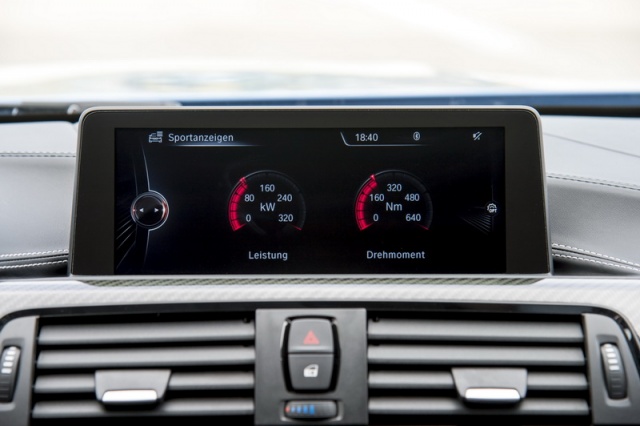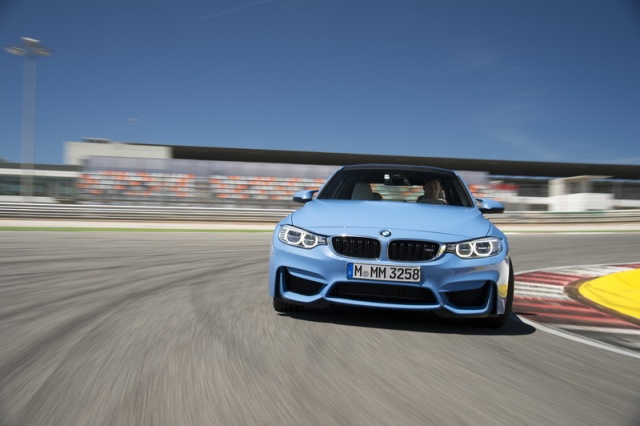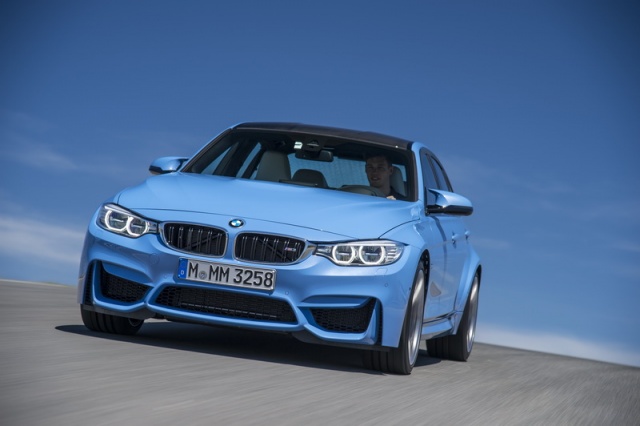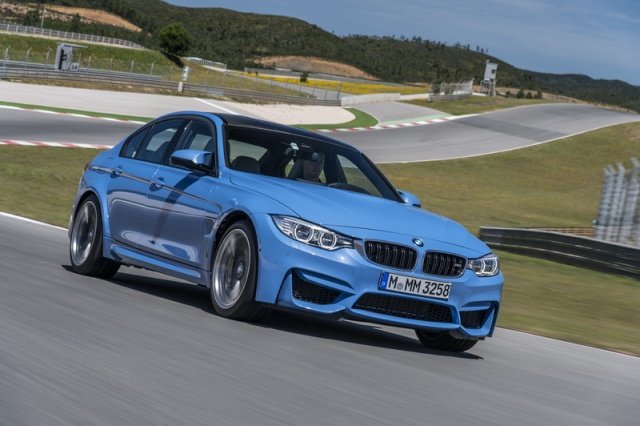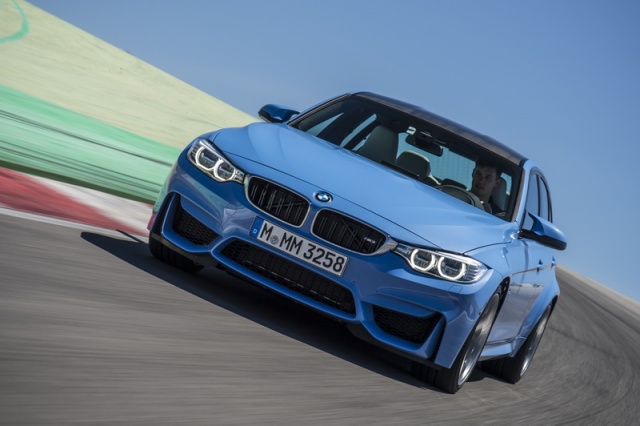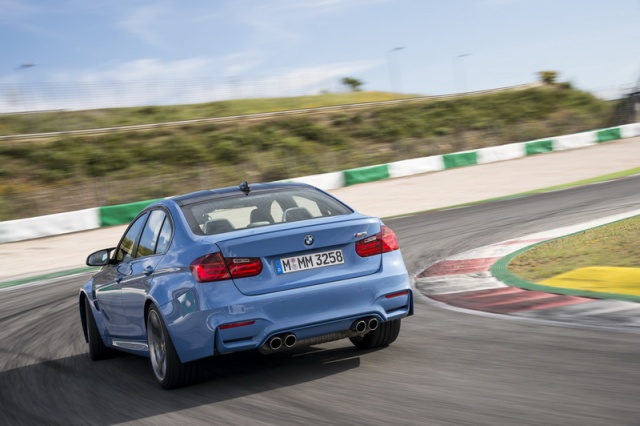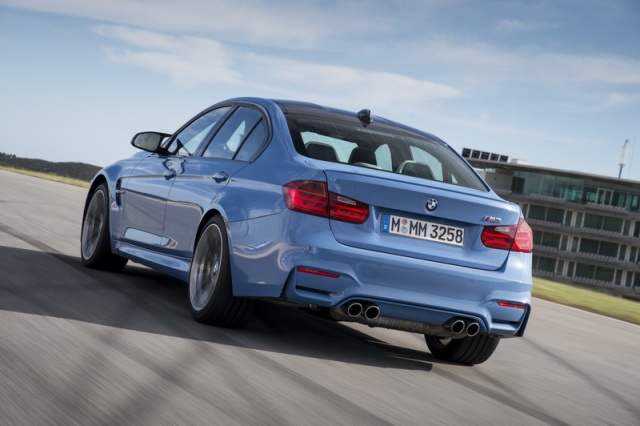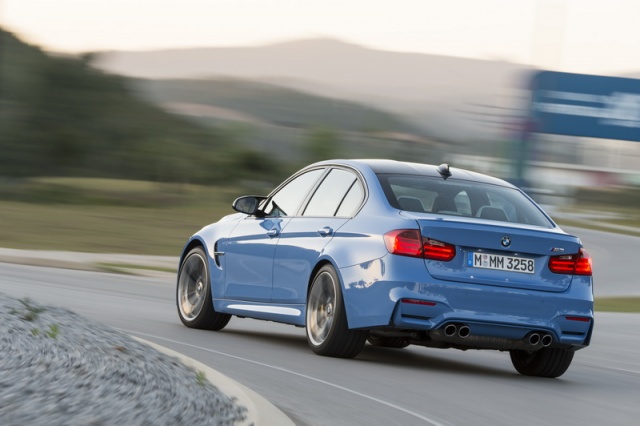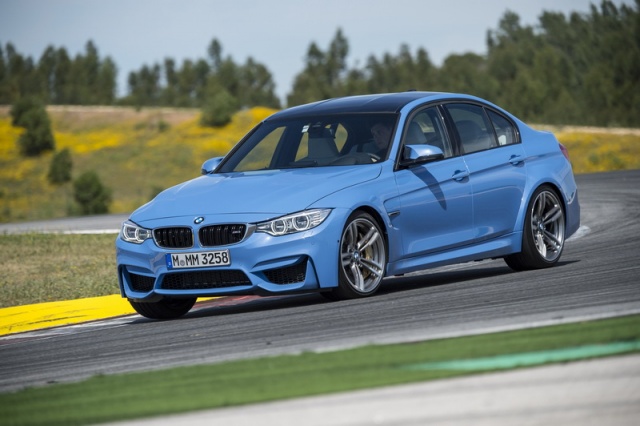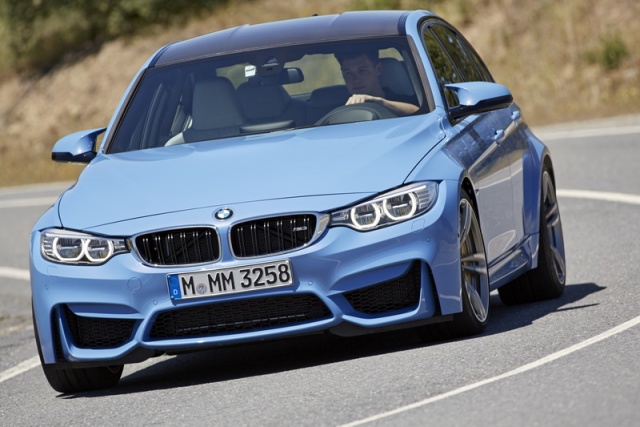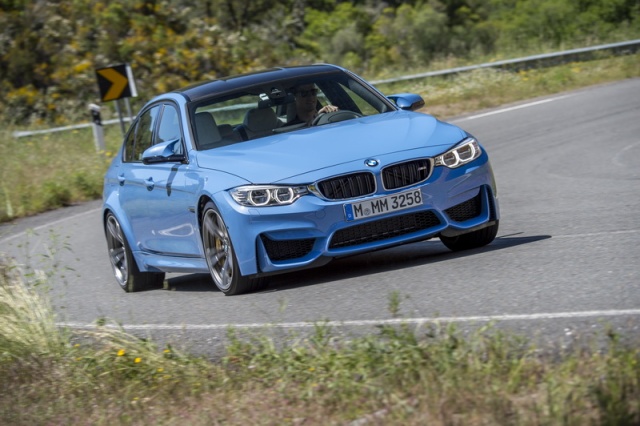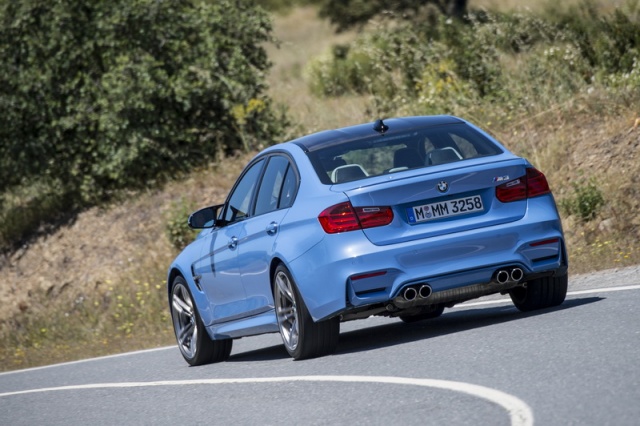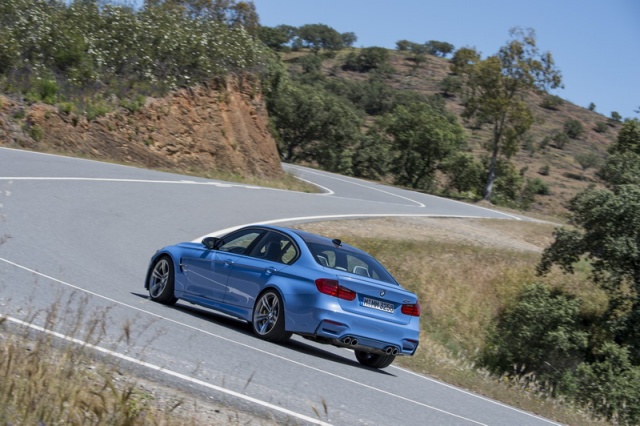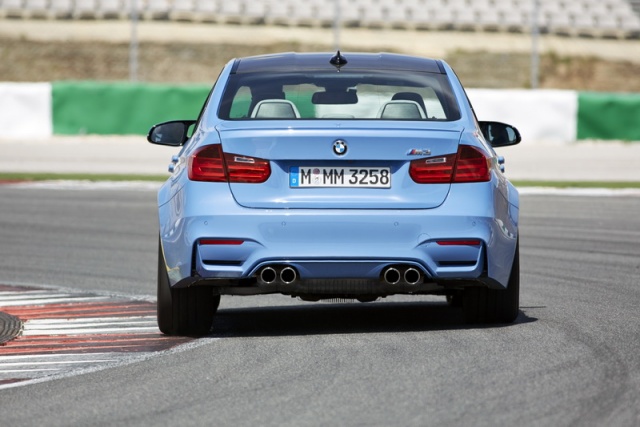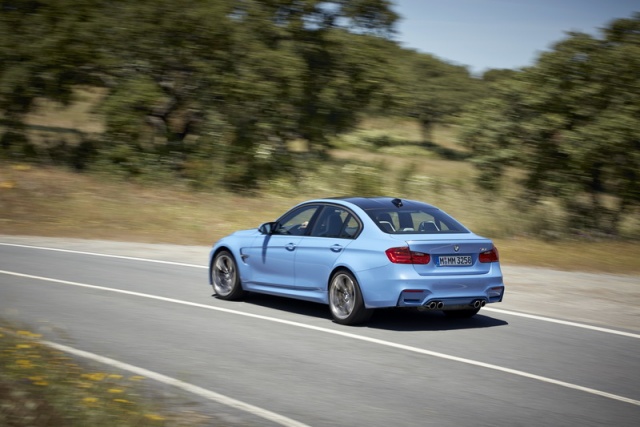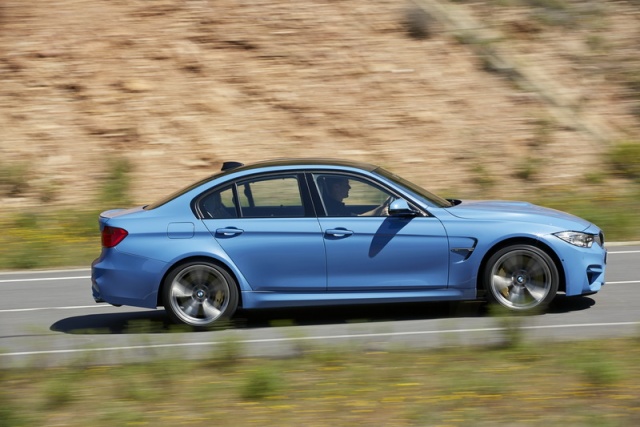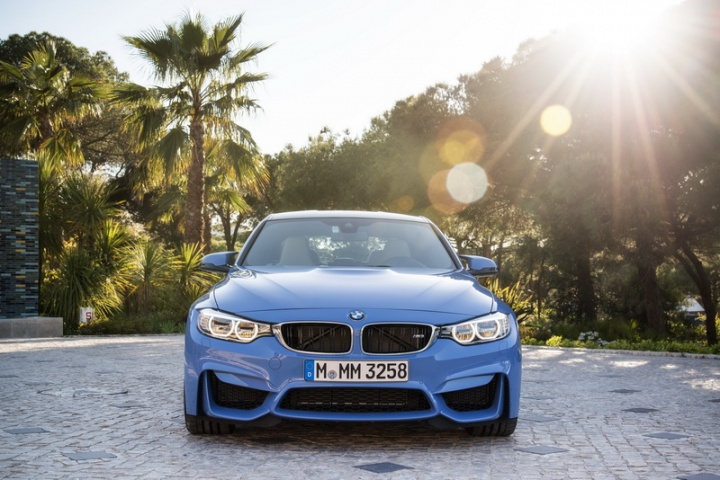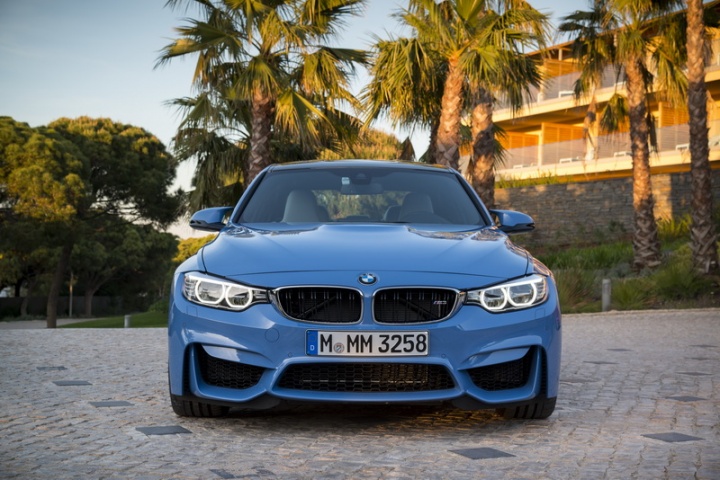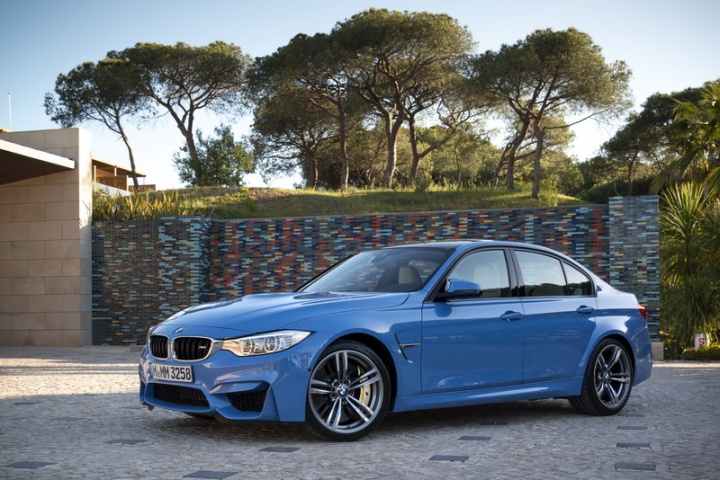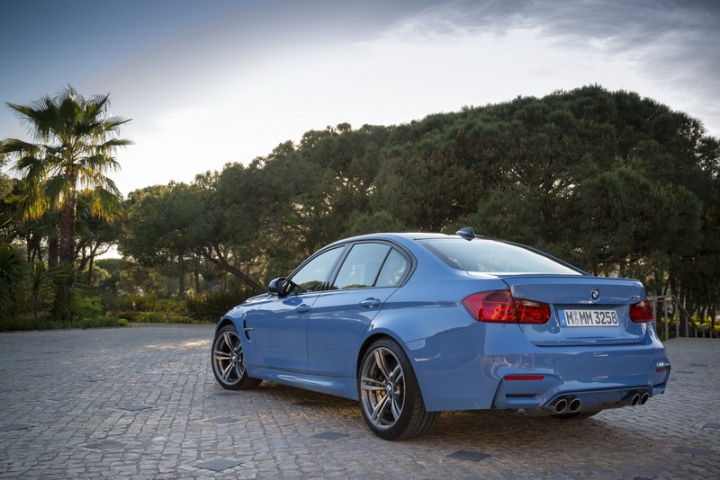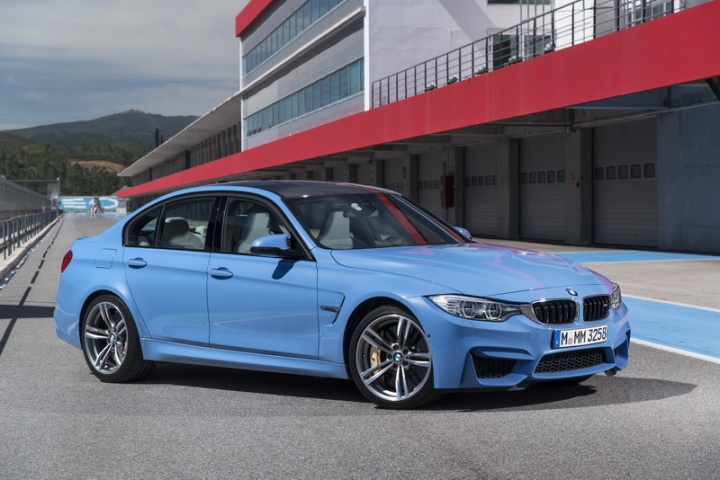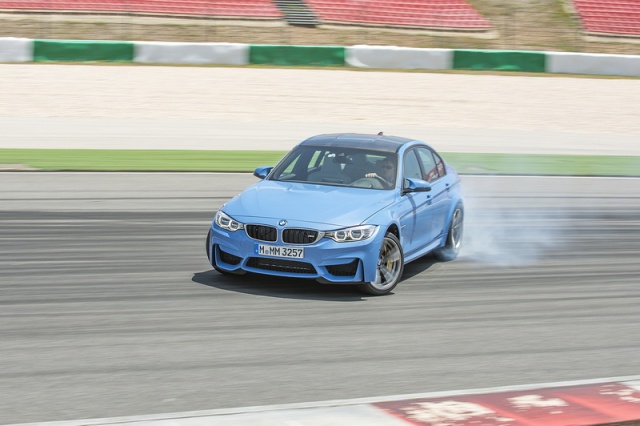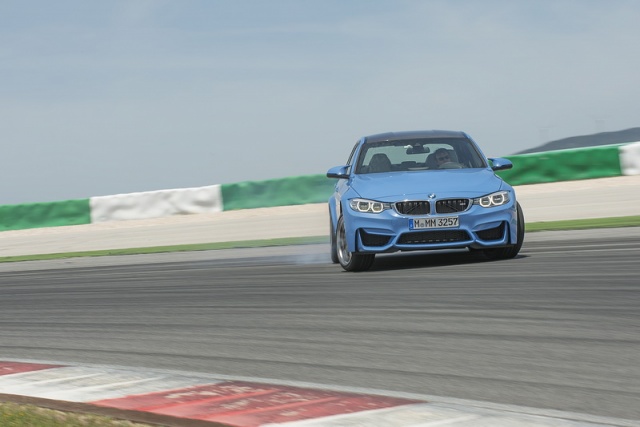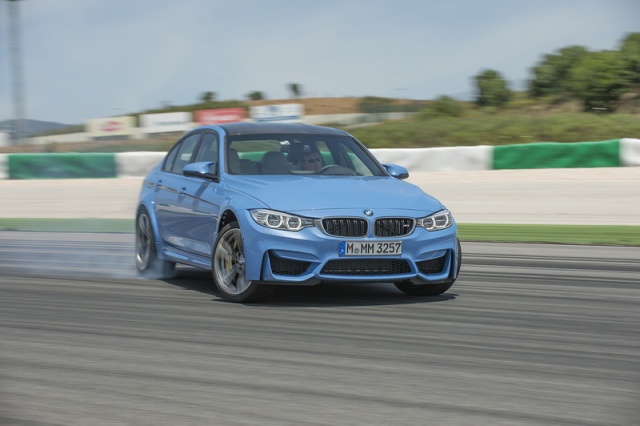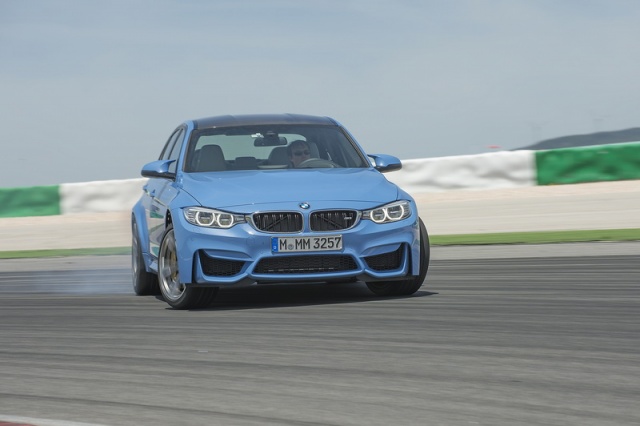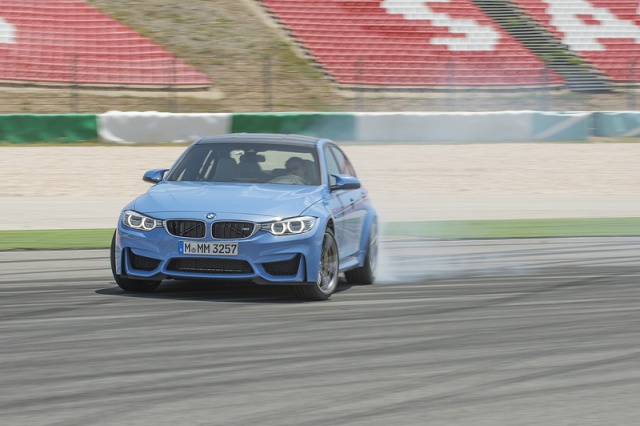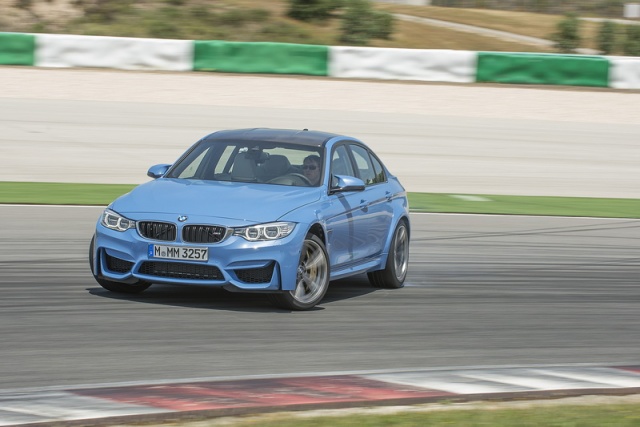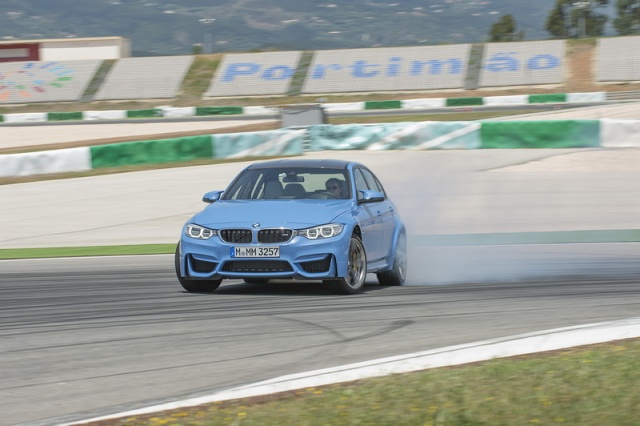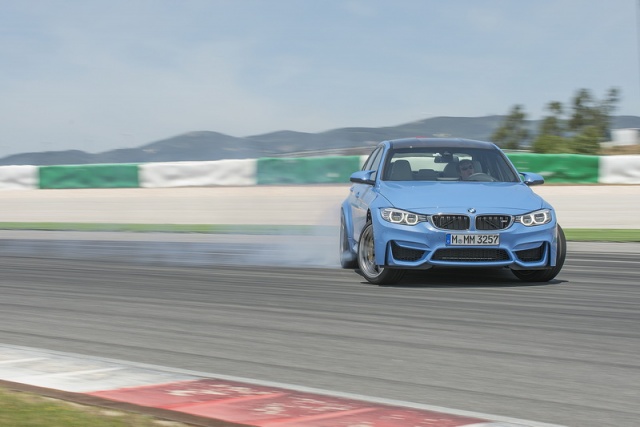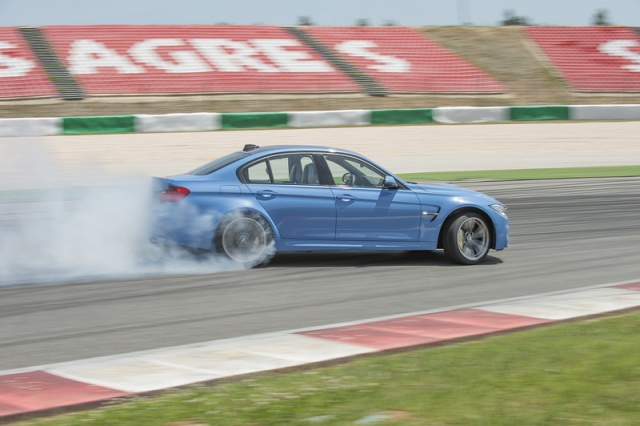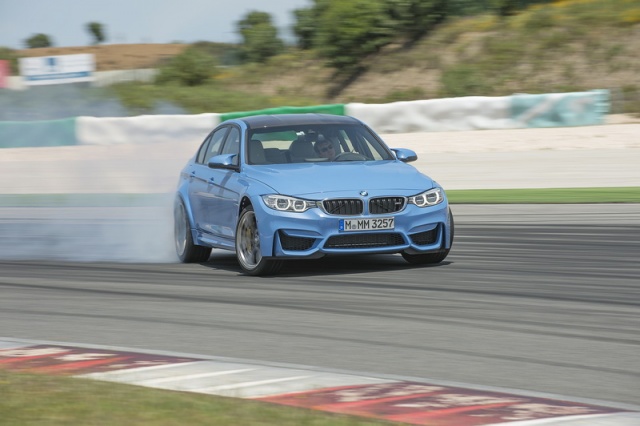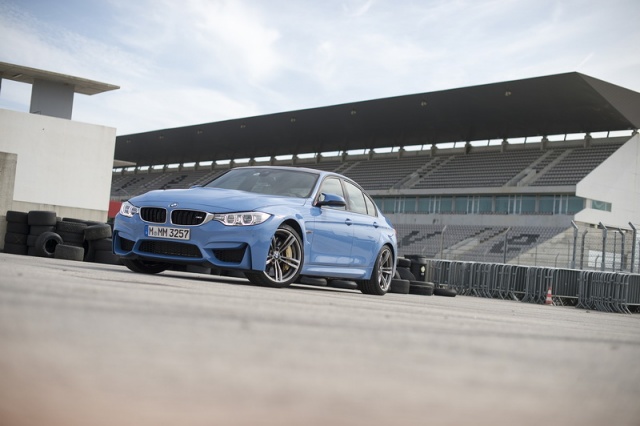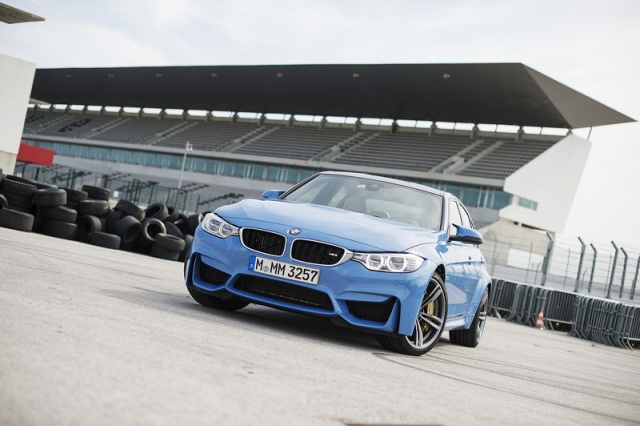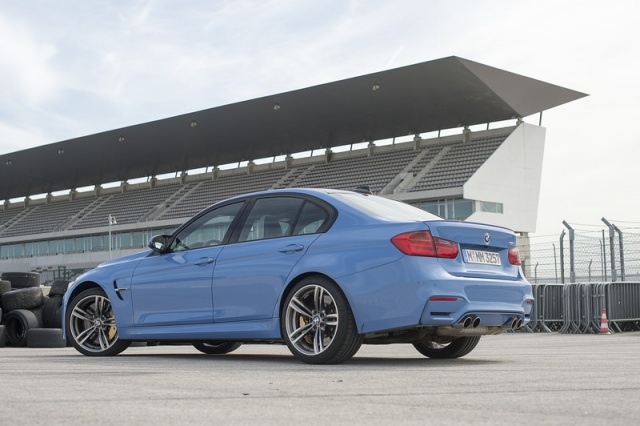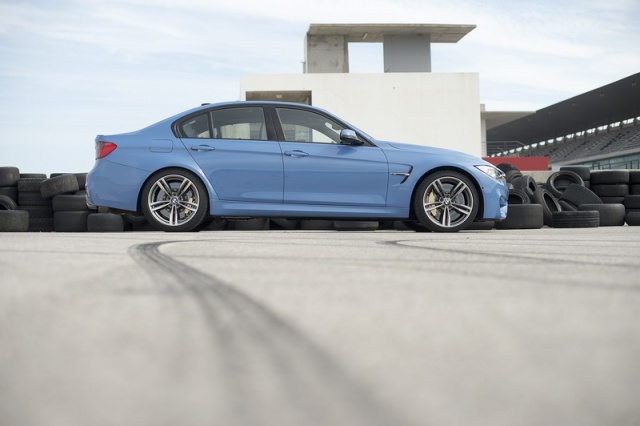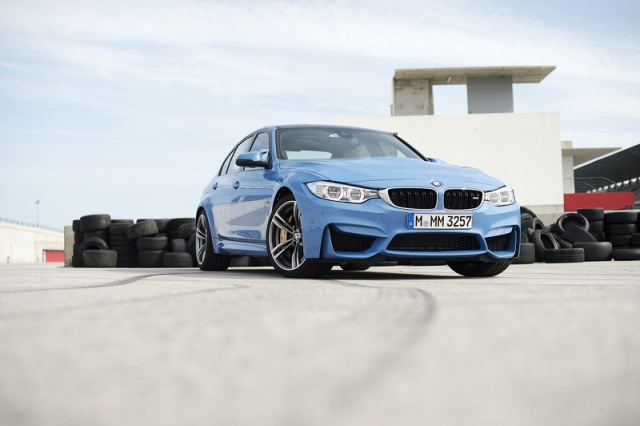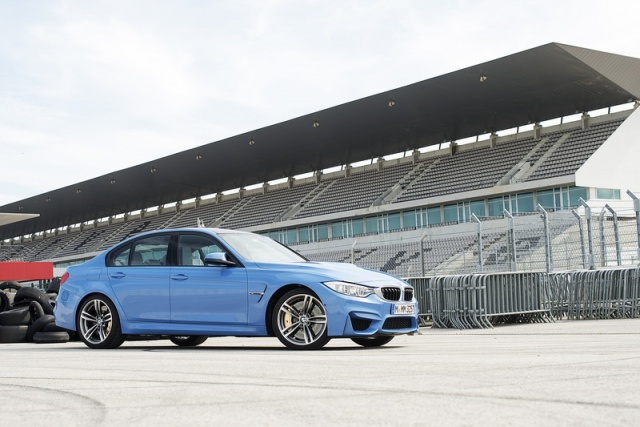Overall rating: 5/5
Now that BMW M's two-door coupé is called the M4 you may be wondering about the M3 lineage; fear not: the equally new M3 Saloon is a worthy recipient of the iconic badge. It's a ballistic performance car that engages the driver like few others. The rear doors should be seen merely as a bonus.
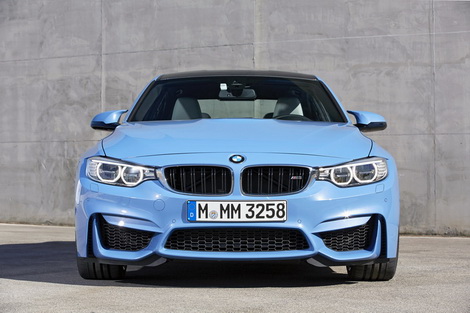
In the metal 5/5
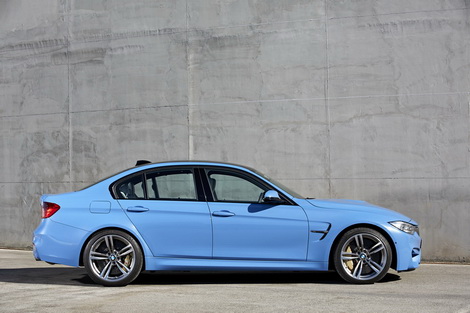
There's virtually no difference between the BMW M3 Saloon and its sibling the M4 Coupé in terms of how they drive and perform. Neither is the price gap of any significance. So, choosing between them comes down to personal taste or whether you need the added practicality of the four-door body style. And personally, even if I didn't have two young kids, I'd choose the M3 Saloon. The deal is sealed by the protruding rear wheelarches, which, because of the unchanged rear doors, are less integrated than those in the M4 Coupé. Arguably they're not as cohesive, but it just adds to the hard core appearance and makes the M3 stand out from all the 3 Series M Sports on the road. Not that they can be specified with the carbon fibre roof - or the natty new door mirrors of the M3.
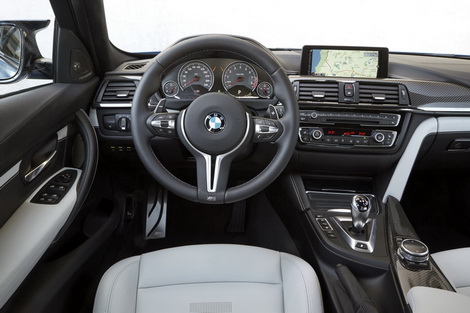
Carbon fibre trim features inside too, setting the tone, and the cabin is distanced from its lesser brethren by a host of bespoke M3 features. The most obvious are the gorgeous leather sports seats with width-adjustable side bolsters and an illuminated BMW M logo. They're heated seats and adjusted electrically. The driver grips a (thankfully) circular M steering wheel and if the DCT gearbox is fitted there are sharp, satisfyingly metal gearchange paddles behind it. That transmission also comes with the stubby little selector in the centre console, which is flanked by a suite of tactile buttons to access the different driving modes for each sub-system (more of which below). The instruments are of a bespoke design and incorporate a 'change up' sequence of lights surrounding the rev counter. The rear seats are new too and despite a composite construction to save weight, they fold and split 60:40.
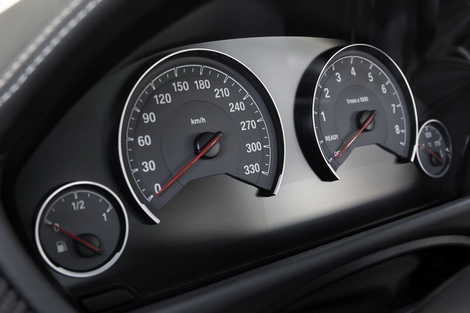
Driving it 4.5/5
While few buyers of a new BMW M3 Saloon are likely to bring it on track, that's where our experience started, and it's a safe environment in which to push the boundaries of a car with the level of performance of this. Saying that, a wide, smooth circuit can sometimes mask how fast a car really is. That didn't happen with the M3. This car is epically fast in all circumstances. Forget the 0-100km/h time though; this car will widen its occupants' eyes most when it's well beyond that speed. The in-gear acceleration is relentless and the 250km/h speed limiter seems laughably low when conditions allow (i.e. nowhere in Ireland...). It's all thanks to the sensational new engine (see 'Worth Noting' below) and the engineers' goal to create strong power and torque at all speeds rather than just specific peaks in the delivery. Just as importantly, it sounds good. It's not as musical an engine as the naturally aspirated V8 powering the previous BMW M3, but it's no less thrilling, especially when the active exhaust valves open and its voice is free.
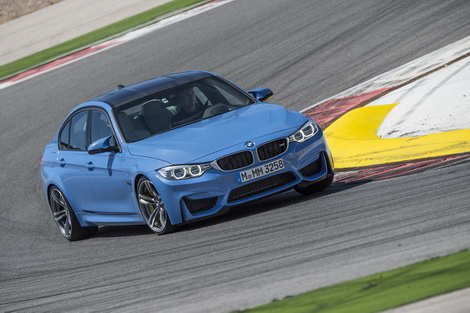
That happens under wide open throttle no matter which engine mode you're in, though they're permanently open if you select Sport or Sport Plus. The default is Efficiency and the car feels decidedly slower in this guise. It is quieter though, which your passengers might appreciate on a long drive. Throttle response increases considerably through the other modes, and it's razor sharp in Sport Plus, meaning it takes a careful right foot to maintain smooth progress at low speeds - or over bumpy surfaces.
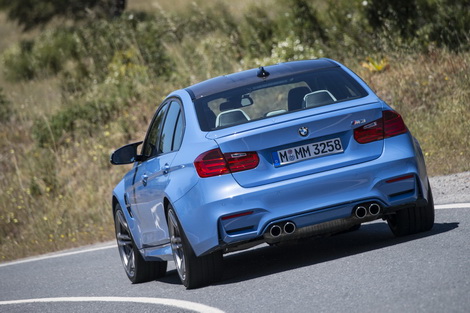
Next to the engine button on the centre console is one controlling the Adaptive M suspension, which is now standard. Drivers choose between Comfort, Sport and Sport Plus settings, though even in the softest the M3 is quite firm on the road - if never unrefined. Body and wheel control are exemplary in return, even over nasty surfaces with unhelpful camber changes. The Sport Plus mode is only of use when the road is really smooth - or you take it on track - and completely eradicates body roll.
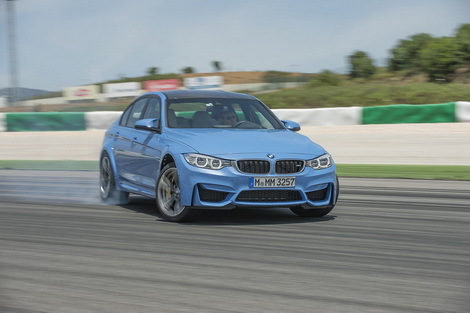
The circuit was a good place to experiment with the various settings in the DSC (Dynamic Stability Control) system. In the wet we'd leave it in the default position, but in the dry, on the road, a single press on the button activates the M Dynamic Mode, which allows a little slip at the rear before cutting power. This reinforces the car's rear-drive dynamics and it's huge fun, allowing most drivers to push on with the knowledge that the electronics will assist if things get a little out of hand. Hold the DSC button down for a little longer and it deactivates it completely. Only then is it possible to carry out the lurid power slides shown here, and while there's a surfeit of power over grip, it still requires dedicated provocation to keep the slide going. As ever the Active M Differential (an electronically controlled limited slip differential on the rear axle) plays its part here, though of course it is designed to do a lot more than allow the driver to showboat!
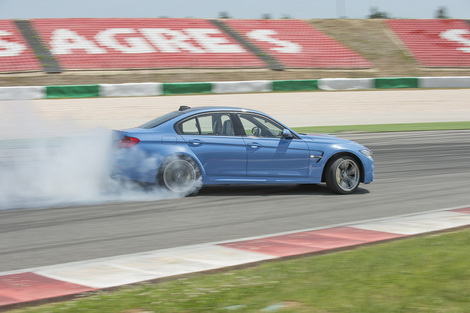
Back on the road, the M3 requires a lot of self-control. Everything about it is set up to drive quickly. The test cars were fitted with the optional BMW M carbon ceramic brakes (they have gold-painted callipers) and though a little noisy after sustained hard use, the immense stopping power never faded. The pedal modulation is nigh on perfect too, allowing fine control of retardation. The steering will probably come in for criticism in some quarters. We're not completely convinced by the three-mode electric system. At the straight ahead there's an odd sensation, though once turned into a corner it feels linear and direct, and there's certainly plenty of communication as to how much grip there is remaining. The answer is usually 'lots'...
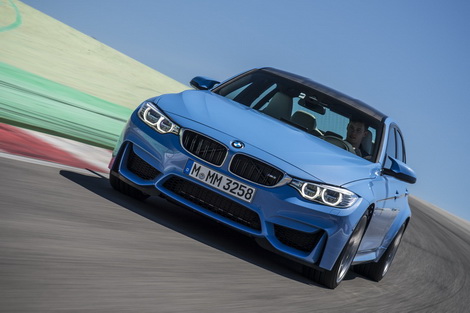
What you get for your money 5/5
Are we allowed to call a car that starts at just over €100,000 a bargain yet? Too early? Tough, BMW is practically giving the M3 away at that price. If the technology and performance don't convince you, then take a look at the standard specification list. Unlike some manufacturers, BMW Ireland largely adopts the same specification for its cars as the UK market, and given that the M cars do so well there, they're generously appointed - more so than in many large European countries. Hence they come with the Adaptive M suspension, 19-inch alloy wheels, front and rear Park Distance Control, the aforementioned heated and electrically adjustable sport seats, electrically folding door mirrors and the full BMW Professional Media package, with upgraded Bluetooth.
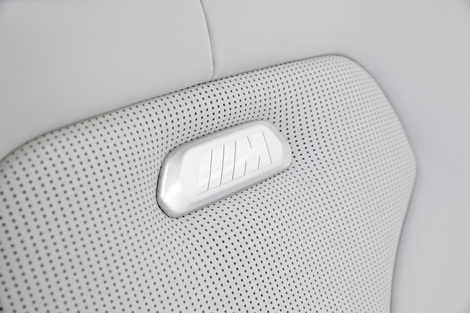
The M DCT dual-clutch gearbox is extra of course (though makes the car quicker and more economical) and there are loads of other tempting options, from the carbon ceramic brakes to BMW Individual finishes inside and out. We reckon the base car is perfect as it is.
Worth Noting
Some will be wondering how different the M3's engine is to that in, say, the BMW M235i Coupé. After all, they are both straight-six 3.0-litre units with turbocharging. For starters the new M engine gets two small turbochargers, each fed by three cylinders. The boost is controlled minutely and there's even a clever anti-lag system, though without the massive pops and bangs of the World Rally Cars. The crankcase is strengthened in a closed deck design, the crankshaft itself is much lighter and optimised for high rpm, the combustion chamber and pistons are new and there's a new oil extraction pump and lubrication system to ensure all components receive oil, regardless of how the car is driven. A neat little factoid leading on from that was found in the press material: the air flowing through the oil cooler causes a venturi effect, which reduces front-end lift and is claimed to enhance the steering at higher speeds. Clever stuff.
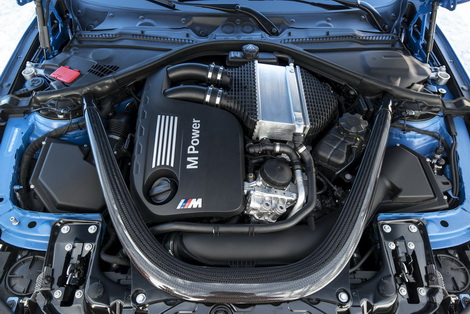
Summary
So much has changed in the fifth generation BMW M3 that we genuinely feared it wouldn't live up to its historic lineage. BMW has allayed those fears; and some. The new M3 is sensationally fast, with the ability to both challenge skilled drivers and enhance the experience for the vast majority of buyers that have no desire to be a race driver. It's well-equipped and right now has precious few direct rivals. We'd have it over the M4 Coupé as well. The M3 is back.
(Still fancy the coupé? Read our first drive of the new BMW M4 Coupé here)
